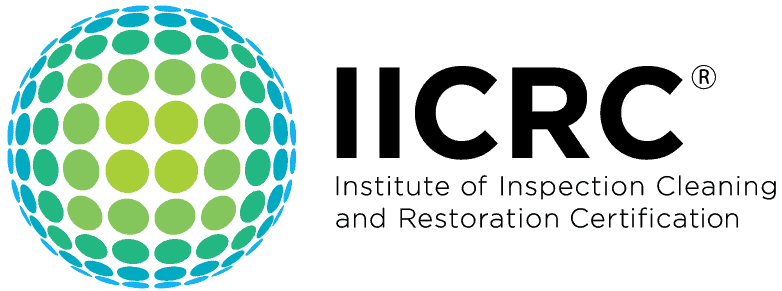Did you know that only 30% of water-damaged walls actually lead to visible mold growth? Contrary to popular belief, water in walls doesn’t always result in mold. There are various factors that influence mold development in homes, and understanding these factors is crucial in preventing mold growth.
In this article, we will explore the relationship between water in walls and mold growth, debunk some common misconceptions, and provide valuable insights on how to identify hidden water damage in homes and implement preventative measures against mold.
Key Takeaways:
- Water in walls does not always cause mold growth.
- Factors such as moisture levels, temperature, time, and the presence of organic materials affect mold development.
- Promptly addressing water issues in homes can prevent mold growth.
- Regular inspections and maintenance help identify and mitigate hidden water damage.
- Implementing preventative measures such as moisture control, proper insulation, and ventilation can combat mold from water damage.
The Relationship Between Moisture and Mold Growth
Moisture plays a critical role in the development of mold. Mold requires water to grow and thrive, making moisture a key factor to consider when addressing mold issues in any environment.
For mold to grow, certain conditions need to be present, including high humidity levels above 60% and temperatures ranging from 77-86°F. These ideal conditions provide a suitable environment for mold spores to germinate and develop into visible colonies.
Organic materials, such as wood or drywall, serve as food sources for mold. The presence of these materials, combined with the right moisture levels, can create a conducive environment for mold growth.
It is important to note that the longer moisture persists in an area, the higher the likelihood of mold growth. Without proper drying and remediation, even small leaks or condensation can lead to significant mold problems over time.
Take, for example, a homeowner in [location] who experienced extensive mold growth in their walls after a plumbing leak went unnoticed for several weeks. The prolonged exposure to moisture provided the necessary conditions for mold to establish and thrive in this case.
In the next section, we will focus on identifying hidden water damage in homes, which is crucial to address promptly in order to prevent mold growth.
Identifying Hidden Water Damage in Your Home
Identifying hidden water damage in your home is crucial to prevent mold growth and maintain a safe living environment. While some water damage is easily visible, there are often hidden signs that can go unnoticed and lead to more significant issues over time.
One of the common signs of hidden water damage is water stains on ceilings or walls. These stains may appear as discoloration or darker patches on the surface. Another indication is musty odors, which can be caused by mold growth resulting from hidden moisture. Warped surfaces, such as bulging or uneven walls or floors, can also be a sign of underlying water damage.
Peeling paint or wallpaper can signal moisture problems as well. If the paint or wallpaper is bubbling or coming off in certain areas, it could be due to water damage. Finally, visible mold growth is a clear indicator of water damage and should be addressed immediately.
To identify hidden water damage, homeowners can use moisture meters to measure the moisture content in walls or other surfaces. These devices can detect hidden moisture that may not be visible to the naked eye. Conducting visual inspections regularly, especially in areas prone to water damage, such as basements, attics, and bathrooms, can also help uncover hidden issues.
In some cases, professional assistance may be necessary, especially when water damage is not easily visible. Certified home inspectors or water damage restoration professionals have the expertise and tools to identify and assess hidden water damage accurately. They can use infrared cameras or moisture detectors to pinpoint areas with excess moisture.
John Smith, a certified home inspector, emphasizes the significance of identifying and addressing hidden water damage to prevent mold growth. He recommends conducting annual inspections to detect and mitigate water damage before it leads to mold growth. By being proactive in identifying and addressing hidden water damage, homeowners can effectively prevent mold and maintain a healthy living environment.
Transitioning to the next section, we will explore preventative measures that homeowners can take to combat mold growth caused by water damage.
Preventative Measures to Combat Mold from Water Damage
To combat mold growth resulting from water damage, it is crucial to implement preventative measures that control moisture levels and minimize the risk of mold development. By taking proactive steps, homeowners can protect their properties and maintain a healthy living environment. Here are some key strategies to consider:
- Moisture Control: The first step in preventing mold growth is to control moisture in your home. Use dehumidifiers to reduce humidity levels, particularly in areas prone to dampness like basements or bathrooms. Additionally, promptly addressing leaks or water damage can help minimize the risk of mold.
- Ventilation: Proper ventilation is essential for preventing moisture buildup and subsequent mold growth. Ensure that your home has sufficient ventilation in areas such as bathrooms, kitchens, and attics. Use exhaust fans during activities that generate moisture, like cooking or showering, and maintain proper airflow throughout the property.
- Proper Insulation: Well-insulated homes are less likely to experience condensation, one of the primary causes of mold growth. Insulate your walls, floors, and roofs using materials that prevent moisture buildup. Proper insulation helps maintain stable indoor temperatures and reduces the chances of mold-favorable conditions.
- Regular Maintenance: Engaging in regular home maintenance can help identify and address potential water issues before they lead to mold growth. Clean gutters regularly to prevent water overflow, inspect and repair roof damage, and ensure proper drainage around the property. Regular maintenance tasks can significantly reduce the risk of water damage and subsequent mold development.
By following these preventative measures, homeowners can effectively combat mold growth resulting from water damage. By controlling moisture levels, ensuring proper ventilation and insulation, and prioritizing regular maintenance, you can create an environment that is inhospitable to mold. Taking these steps not only protects your property but also promotes the health and well-being of everyone living in it.
Does Water in Walls Always Cause Mold?
Throughout this article, we have explored the relationship between water in walls and mold growth, discussing various factors that influence the development of mold in homes. While it is commonly believed that water in walls always leads to mold, this is not always the case.
It is essential to understand that mold growth depends on several factors, including moisture levels, temperature, time, and the presence of organic materials. Without these favorable conditions, mold may not develop even in the presence of water in walls.
Swift action is crucial in addressing water issues to prevent mold growth. Drying and disinfecting affected areas promptly can minimize the chances of mold development. It is also advisable to seek professional advice if needed, as experts can provide necessary guidance and solutions for addressing water damage.
As responsible homeowners, it is important to address water issues promptly and take preventative measures to ensure a healthy living environment. By understanding the factors that influence mold growth and addressing water damage promptly, we can mitigate the risks and maintain a mold-free home.
Conclusion
Throughout this article, we have explored the relationship between water in walls and mold growth, as well as the importance of identifying hidden water damage and implementing preventative measures to combat mold. It is essential to understand that while water in walls can contribute to mold growth, it does not always guarantee its presence.
By addressing water issues promptly and taking proactive steps to control moisture levels, homeowners can significantly reduce the risk of mold development in their homes. Regular inspections and vigilance in detecting hidden water damage, such as water stains, musty odors, or warped surfaces, are crucial in preventing long-term mold growth.
It is recommended that homeowners schedule regular home inspections and seek professional assistance for water damage repairs when necessary. Take advantage of proper moisture control techniques, including adequate ventilation and insulation, to create a healthy and mold-resistant indoor environment.
Remember, the key to preventing mold growth caused by water in walls lies in swift action and ongoing maintenance. By understanding the factors involved and implementing preventive measures, you can protect your home and maintain a healthy living space for you and your family.

















